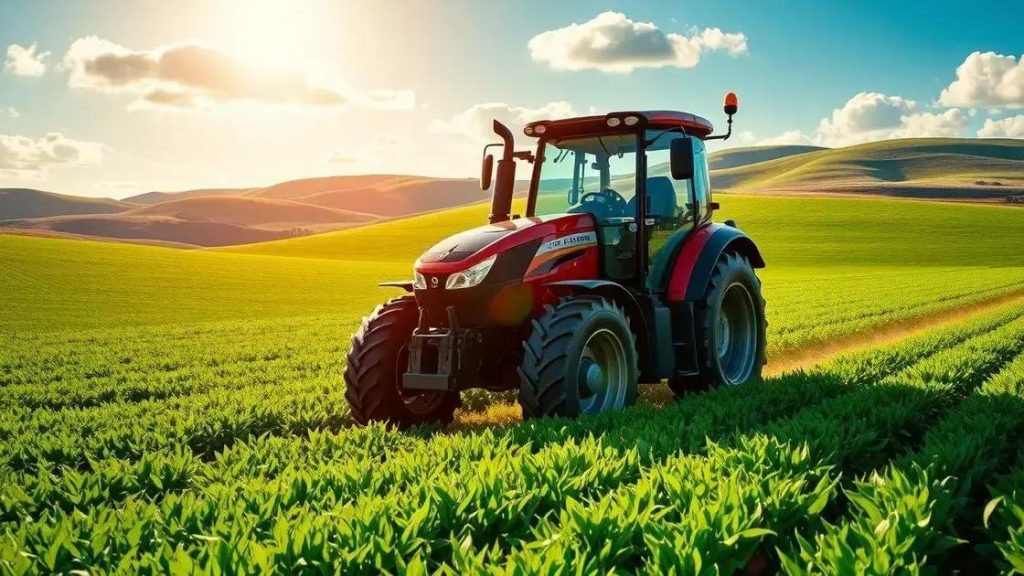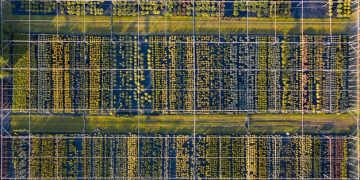GPS-guided tractor steering technology: the future of farming

GPS-guided tractor steering technology enhances farming efficiency and precision by utilizing satellite signals for accurate machinery operation, ultimately reducing costs and improving productivity in agricultural practices.
GPS-guided tractor steering technology is changing the landscape of agriculture, offering farmers enhanced precision in their operations. Have you ever wondered how these systems can optimize your fieldwork and increase productivity? Let’s dive into this innovative solution that promises to streamline farming practices.
Understanding GPS-guided steering technology
Understanding GPS-guided steering technology is essential for modern agriculture. This innovative system uses satellite signals to help tractors steer more accurately, improving efficiency in the field. With this technology, farmers can expect consistent results and reduced operational costs.
How GPS-guided steering works
The technology relies on a combination of GPS receivers and sensors installed in the tractor. These components work together to calculate the tractor’s position in real-time, adjusting the steering automatically. This precision allows for better performance on the field, enabling farmers to achieve high levels of accuracy.
Benefits of using GPS-guided steering
- Increased accuracy in planting and harvesting.
- Reduction in fuel consumption due to optimized paths.
- Less overlap and waste of seeds and fertilizers.
- Improved overall productivity.
Farmers who adopt GPS-guided steering technology often notice a significant difference in their day-to-day operations. For instance, they can cover larger areas with less effort, making the labor more manageable. Additionally, the technology allows for better record-keeping on various operations, which can facilitate strategic planning for future seasons.
This system can also enhance safety in the field. With automatic steering, the risk of accidents caused by operator fatigue can be minimized. As a result, farmers can focus on other important tasks while the tractor handles the driving.
Incorporating GPS-guided steering into farming practices also opens the door to advanced data collection. Farmers can gather valuable insights about their fields and operations, leading to more informed decisions that contribute to sustainability and profitability.
Advantages of GPS-guided steering for farmers

The advantages of GPS-guided steering for farmers are numerous. This technology significantly enhances farming practices by improving efficiency and productivity. Farmers can work smarter, not harder, and experience a range of benefits.
Increased precision in operations
One of the most notable advantages is the increased precision in operations. GPS-guided steering allows machinery to follow predefined routes accurately. This means less overlap in planting and fertilizing, which can lead to cost savings.
Time and cost savings
- Reduced fuel consumption as tractors follow optimal paths.
- Minimized labor costs since the system can operate autonomously.
- Less seed and fertilizer waste due to precise applications.
- Time saved from fewer trips back to the supply store.
Farmers who leverage GPS-guided steering technology often find that their operations become smoother and more efficient. The technology reduces the wear and tear on equipment, contributing to longevity and fewer repairs.
Another advantage is that this technology aids in data collection. Farmers can track various metrics related to their fields, which helps them make informed decisions. They can analyze trends over time and adjust their strategies accordingly.
Implementing GPS-guided steering can also enhance safety in the fields. With automated systems, farmers can avoid potential accidents caused by fatigue or distraction. This allows them to concentrate on other critical aspects of their operations.
Additionally, using this technology prepares farmers for future innovations in agriculture. As the industry evolves, those already using advanced techniques like GPS-guided steering will be better positioned to adopt new technologies that improve farming practices even further.
How to implement GPS technology in your operations
Implementing GPS technology in your operations can seem daunting, but the process can be straightforward with the right steps. It begins with assessing your current farming practices and identifying areas where this technology can improve efficiency and productivity.
Choosing the right equipment
The first step is to choose the right equipment. Look for tractors and implements that are already equipped with GPS-guided steering systems. If your current equipment doesn’t have this feature, consider retrofitting it or investing in new machinery.
Investing in software and training
In addition to hardware, investing in software is essential. Software programs designed for agriculture can help you manage data collected from your GPS technology. Moreover, training your team is crucial. Ensure they understand how to use the equipment effectively.
Integrating data collection
- Utilize GPS technology for precision planting and fertilization.
- Track field conditions for better decision-making.
- Analyze harvest data for improved future results.
- Implement real-time monitoring for immediate adjustments.
Once you have the necessary equipment and training, it’s important to integrate data collection into your daily operations. This helps you make better decisions based on real-time conditions in your fields. The data from GPS technology can provide insights into soil health, moisture levels, and crop performance.
Alongside integrating data, maintaining the equipment is essential. Regular checks and updates ensure everything functions smoothly. As you familiarize yourself with the technology, begin to explore advanced features that may further enhance your operations.
Finally, connect with other farmers or industry experts to share experiences and learn more about maximizing GPS technology in your operations. Joining forums, attending workshops, and collaborating with peers can provide valuable insights to refine your approach and further embrace these advancements in agriculture.
Future trends in GPS-guided agricultural technology

The future trends in GPS-guided agricultural technology promise exciting advancements for farmers around the world. As technology continues to evolve, farmers can expect even greater precision and efficiency in their operations.
Integration with autonomous machinery
One of the upcoming trends is the integration of GPS systems with autonomous machinery. This means tractors and other equipment could operate without direct human intervention. These autonomous machines will enhance productivity by performing tasks continuously, even in challenging conditions.
Data analytics and AI
In the coming years, the use of data analytics and artificial intelligence (AI) will become more prominent in agriculture. Farmers will benefit from advanced algorithms that analyze data collected via GPS technology. This information can lead to improved decision-making and crop management strategies.
Enhanced precision farming techniques
- Increased use of drone technology for mapping and monitoring fields.
- Improved sensor technology for real-time data collection.
- Better crop health monitoring through satellite imagery.
- Smarter irrigation systems based on precise weather data.
A future trend includes enhanced precision farming techniques that utilize GPS-guided systems. This will allow for more tailored farming practices, ensuring that resources like water, fertilizers, and pesticides are used only where necessary, reducing waste and environmental impact.
Collaboration between farmers and tech companies will also play a significant role. As ag-tech startups emerge, they will bring innovative solutions, offering more tools and options for farmers seeking to optimize their operations with GPS technology.
Lastly, sustainability will be at the forefront of future innovations in agriculture. GPS-guided technologies will increasingly focus on sustainable practices that help conserve resources and promote eco-friendly farming methods. As the world faces challenges related to climate change, these advancements will be crucial for ensuring food security while preserving natural resources.
FAQ – Frequently Asked Questions about GPS-guided Agricultural Technology
What is GPS-guided agricultural technology?
GPS-guided agricultural technology uses satellite signals to help farmers operate their machinery more accurately, improving efficiency and productivity.
How can GPS technology reduce farming costs?
By optimizing resource use such as seeds, fertilizer, and fuel, GPS technology helps reduce waste and lowers overall operational costs.
What are some future trends in GPS-guided farming?
Future trends include the integration of autonomous machinery, enhanced data analytics, and a greater focus on sustainability.
How do I implement GPS technology in my farm operations?
Start by choosing the right equipment, investing in relevant software, and ensuring your team is trained to use the technology effectively.





